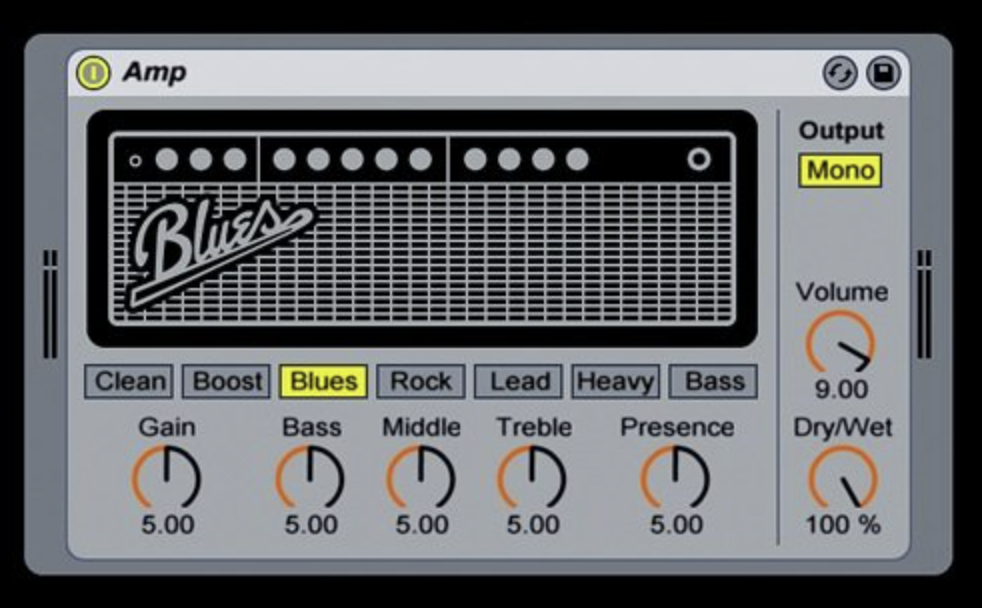Unveiling the Power of Ableton Live's Amp Effect
In the realm of music production, crafting distinct and vibrant guitar tones remains a pivotal aspect. Ableton Live, renowned for its versatility in electronic music, doesn't fall short when it comes to shaping guitar sounds. At the heart of this capability lies the Amp Effect—a powerhouse for sculpting diverse guitar tones within the software.
Understanding the Amp Effect in Ableton Live
The Amp Effect is a virtual amplifier and cabinet simulator that mimics the behavior of real-world guitar amplifiers. From vintage warmth to contemporary crunch, it's a treasure trove of sonic possibilities. To unveil its full potential, let's delve deeper into its components and functionalities.
Amp Models
Ableton Live's Amp Effect boasts a range of meticulously modeled amplifier emulations. Each model encapsulates the nuances and characteristics of iconic amps, such as the clean, chime-like tones of Fender's Deluxe Reverb or the aggressive, high-gain roar of Marshall stacks. Understanding the sonic traits of each model empowers you to select the perfect foundation for your desired sound.
Cabinet and Mic Settings
The Amp Effect isn't limited to amplifiers; it also simulates speaker cabinets and microphone placements. Cabinets significantly influence the tonal characteristics, offering various sizes, speaker configurations, and materials. Experimenting with different cabinets alongside mic placements (close, distant, off-axis) allows for precise tonal sculpting, providing a spectrum of sonic flavors.
Tone Controls and Parameters
Fine-tuning your guitar tone involves a plethora of adjustable parameters. From basic tone controls like Bass, Middle, and Treble to more nuanced features such as Presence, Resonance, and Brightness, these parameters allow for meticulous shaping of the tone, enabling you to achieve the exact sound you envision.
Implementing the Amp Effect: Step-by-Step Guide
Now, let's embark on a step-by-step journey to leverage the Amp Effect effectively within Ableton Live:
Step 1: Setting Up the Amp Effect
Load the Amp Effect: In Ableton Live's Device Browser, navigate to Audio Effects > Amp and drag the Amp Effect onto your guitar track.
Selecting an Amp Model: Click on the Amp Effect to reveal its interface and explore the various amp models available. Choose an amp model that aligns with the tone you aim to achieve.
Step 2: Adjusting Basic Parameters
Tone Controls: Start by adjusting basic tone controls (Bass, Middle, Treble) to sculpt the fundamental characteristics of your guitar tone.
Drive and Gain: Experiment with the Drive and Gain controls to achieve the desired level of distortion or overdrive.
Step 3: Exploring Cabinet and Mic Settings
Selecting Cabinets: Click on the Cabinet section and explore the different cabinet options available. Each cabinet imparts its unique sonic fingerprint to your tone.
Mic Placement: Experiment with various microphone placements to capture different aspects of your tone. Adjust the distance, angle, and position to find the sweet spot.
Step 4: Fine-tuning and Experimentation
Fine-tuning Parameters: Dive deeper into the advanced parameters like Presence, Resonance, and Brightness to refine your tone further.
Experimentation and Iteration: Don’t hesitate to experiment with different combinations of amp models, cabinets, and mic placements. Often, unexpected combinations lead to intriguing and unique tones.
Tips for Maximizing the Amp Effect's Potential
1. Layering and Stacking
Combine multiple instances of the Amp Effect on a single track or across multiple tracks to create complex, layered guitar tones. Experimenting with different combinations can yield rich, textured sounds.
2. Automation and Modulation
Utilize automation and modulation within Ableton Live to dynamically alter Amp Effect parameters over time. This technique adds movement and evolution to your guitar tones, enhancing their expressiveness.
3. Parallel Processing
Consider using parallel processing by blending the Amp Effect-processed signal with the dry (unprocessed) signal. This method retains the clarity of the original signal while adding the desired character from the Amp Effect.
Conclusion
Ableton Live's Amp Effect serves as a versatile and powerful tool for shaping guitar tones. By comprehending its components, functionalities, and implementation techniques, you can unlock a world of diverse sonic possibilities. Experimentation, coupled with a solid understanding of its nuances, is key to harnessing the full potential of this remarkable audio processing gem.
With this guide, you're equipped to embark on a sonic journey, sculpting captivating guitar tones that elevate your music production endeavors within Ableton Live's creative ecosystem.




